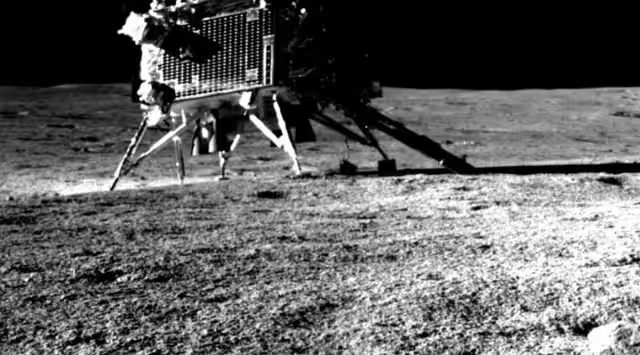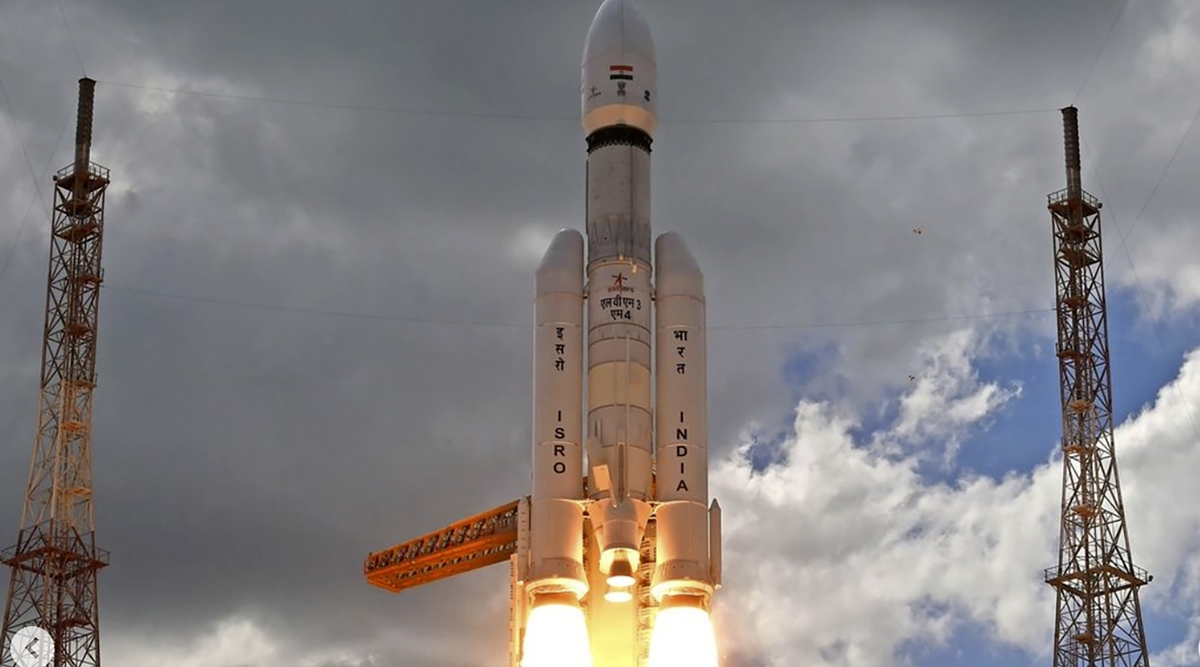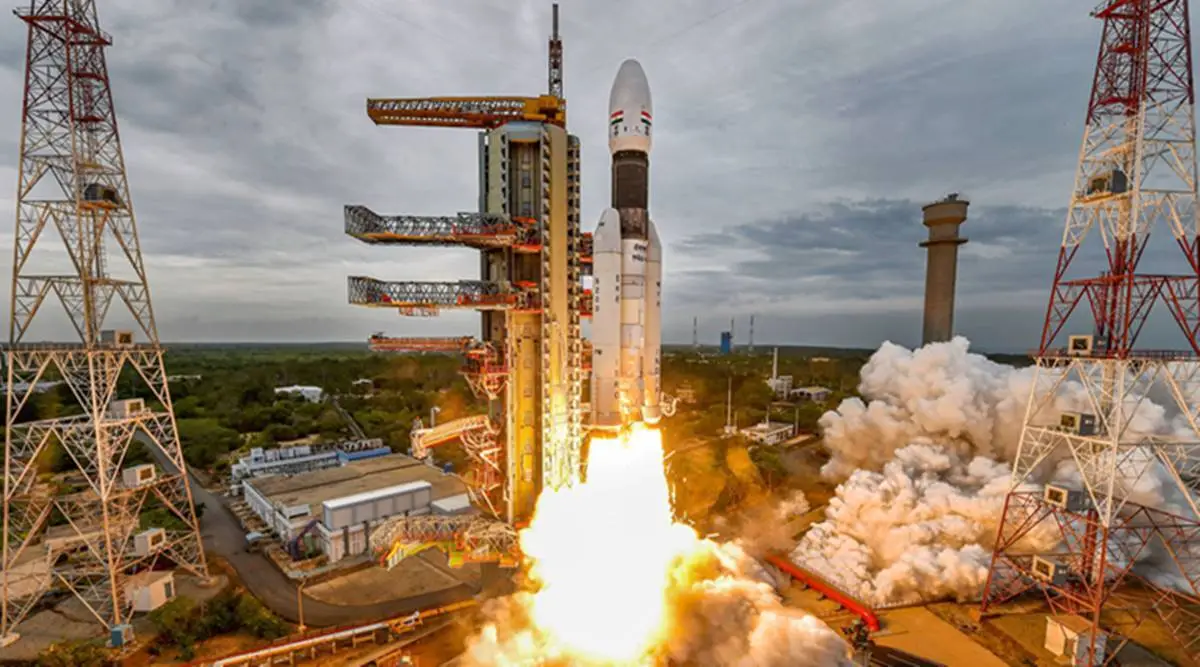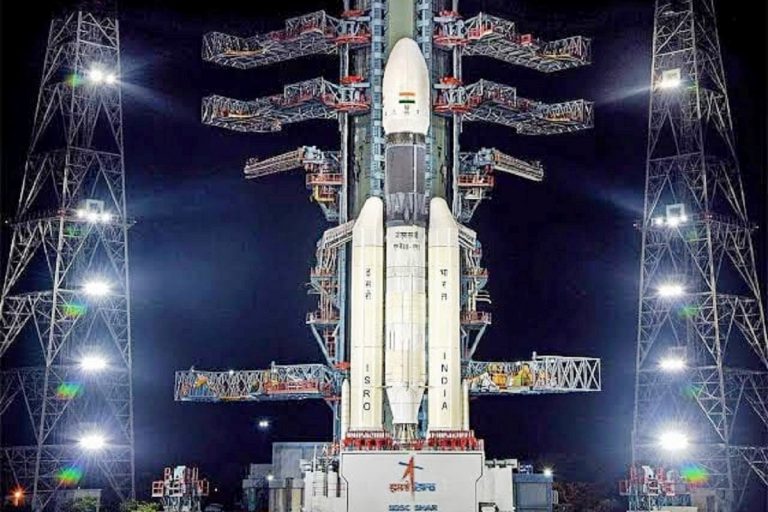A Captivating View: ISRO Shares Image of Chandrayaan-3 Lander Vikram Captured by Pragyan Rover, Reminding Us to Smile!

A Captivating View: ISRO Shares Image of Chandrayaan-3 Lander Vikram Captured by Pragyan Rover, Reminding Us to Smile!
India’s Chandrayaan-3 mission has marked a significant achievement with successfully capturing the first image of its lander, Vikram, on the lunar surface. This noteworthy milestone was accomplished through the efforts of the Pragyan rover, which had disembarked from the lander and utilized its Navigation Camera (NavCam) for this task.
The successful imaging of the lander on the lunar surface represents a crucial step forward for the Chandrayaan-3 mission, showcasing the effectiveness of the rover’s equipment and capabilities. The Navigation Camera’s ability to capture clear images of the lander demonstrates the precision and accuracy of the technology employed in this lunar exploration endeavor.
By capturing this image, the Chandrayaan-3 mission reinforces India’s commitment to space exploration and further advances its capabilities in conducting scientific research on the moon. The successful functioning of the Pragyan rover and its Navigation Camera underlines the expertise and dedication of the scientists and engineers involved in the mission.
The achievement holds significance for India’s space program and the broader field of lunar exploration. The Chandrayaan-3 mission’s ability to capture images of the lander on the lunar surface contributes to a better understanding of the moon’s environment and aids in planning future missions and endeavors in space exploration.

The Chandrayaan-3 mission’s Pragyan rover is equipped with essential imaging equipment, including the Navigation Camera (NavCam) and the Lander Horizontal Velocity Camera (LHVC). These cameras are pivotal in guiding the rover’s movements across the lunar surface while contributing to scientific research and exploration objectives.
The NavCam serves as the “eyes” of the rover, aiding in navigation and allowing the mission operators to precisely control the rover’s movements. By capturing images of the surrounding terrain, the NavCam assists in avoiding obstacles and navigating through the moon’s rough and challenging landscape. This functionality ensures the rover’s safety and effectiveness as it explores its designated area.
On the other hand, the Lander Horizontal Velocity Camera (LHVC) contributes to the rover’s navigation by providing information about the rover’s horizontal velocity, orientation, and relative movement to the lander. This data is vital for maintaining proper alignment and control during the rover’s movements on the lunar surface.
Furthermore, these cameras have scientific value beyond navigation. They allow scientists and researchers to gather visual information about the lunar terrain, helping to analyze the moon’s surface’s geological features, mineral composition, and elemental distribution. This data can provide valuable insights into the moon’s history, formation, and evolution.

The successful operation of these cameras enhances the overall success of the Chandrayaan-3 mission by enabling accurate navigation and aiding in scientific exploration. The combined capabilities of the NavCam and LHVC contribute to a comprehensive understanding of the lunar environment while paving the way for future space exploration endeavors.
The Navigation Camera (NavCam) used in India’s Chandrayaan-3 mission was developed by the Laboratory for Electro-Optics Systems (LEOS), which is a research and development unit of the Indian Space Research Organisation (ISRO). LEOS is critical in designing and creating advanced electro-optical sensors and systems in various space missions and applications.
The NavCam developed by LEOS is a crucial component of the Chandrayaan-3 rover’s navigation system. It provides real-time imagery of the rover’s surroundings, enabling precise navigation, obstacle avoidance, and safe traversal across the lunar terrain. The camera’s capabilities contribute to the mission’s overall success by ensuring the rover’s accurate movement and operation on the moon’s surface.
LEOS’s expertise in electro-optical technologies and systems is integral to ISRO’s space exploration efforts. The lab’s work encompasses the development of cutting-edge sensors, cameras, and imaging systems tailored to the unique challenges and demands of space missions. These technologies are vital for navigation, scientific research, and data collection.

The successful integration of the NavCam into the Chandrayaan-3 rover underscores the capabilities of ISRO and its research and development units like LEOS. It reflects ISRO’s commitment to innovation, technological advancement, and cosmos exploration. The contributions of LEOS and similar units continue to propel India’s space program forward, enabling the nation to achieve remarkable milestones in space exploration.
The image shared by ISRO on its official social media accounts, capturing the Vikram lander and Pragyan rover on the lunar surface, marks a significant moment in India’s space exploration journey. The caption “Smile, please!” reflects the excitement and achievement of capturing this historic image. The image provides a unique and detailed view of the lander and rover, offering valuable insights into their condition and positioning on the moon.
The image showcases various key components of the lander and rover. The four legs of the Vikram lander, designed to provide stability during landing, are visible in the image. The presence of the four thrusters suggests the controlled descent and landing process that brought Vikram to the lunar surface.
The Pragyan rover’s solar panel and antenna are also discernible in the image. These components are crucial for the rover’s power supply and communication capabilities. The solar panel captures sunlight to generate energy for the rover’s operations, while the antenna facilitates communication with mission control on Earth.

Moreover, the image shows the lunar terrain at the south pole, where the Chandrayaan-3 mission successfully landed. The rocky and dusty landscape in the image underscores the challenging conditions of the moon’s surface and highlights the engineering achievements required to navigate and operate on such terrain.
Chandrayaan-3 marks the continuation of India’s ambitious lunar exploration efforts. The previous missions, Chandrayaan-1 and Chandrayaan-2, laid the foundation for India’s presence in space exploration and demonstrated the country’s capabilities in conducting complex interplanetary missions.
Chandrayaan-1, launched in 2008, was India’s first mission to the moon. It made history by discovering evidence of water molecules on the lunar surface and providing crucial insights into the moon’s geology and mineral composition. The mission’s Moon Impact Probe also became the first Indian-built object to reach the moon’s surface.
Chandrayaan-2, launched in 2019, was a more comprehensive mission that included an orbiter, lander (Vikram), and rover (Pragyan). While the orbiter continued to study the moon from its orbit, the lander’s soft landing attempt did not go as planned, resulting in losing communication with the Vikram lander during its descent. However, the orbiter’s continued operations have contributed valuable data for lunar research.

Chandrayaan-3’s successful landing with the capture of the Vikram lander and Pragyan rover on the lunar surface represents a significant step forward for India’s lunar exploration efforts. The mission demonstrates the nation’s resilience and determination in learning from past experiences and overcoming challenges.
By pursuing lunar exploration, India aims to better understand the moon’s history, geology, and potential resources. These missions also showcase India’s technological advancements in space exploration and contribute to the global scientific community’s understanding of the moon and its significance for planetary research.
Chandrayaan-3’s achievement fosters national pride and reinforces India’s commitment to space exploration and its ability to develop and execute complex missions. As India expands its space capabilities, it reinforces its position as a significant player in the global space community, with future missions likely to contribute even more to our understanding of the cosmos.




